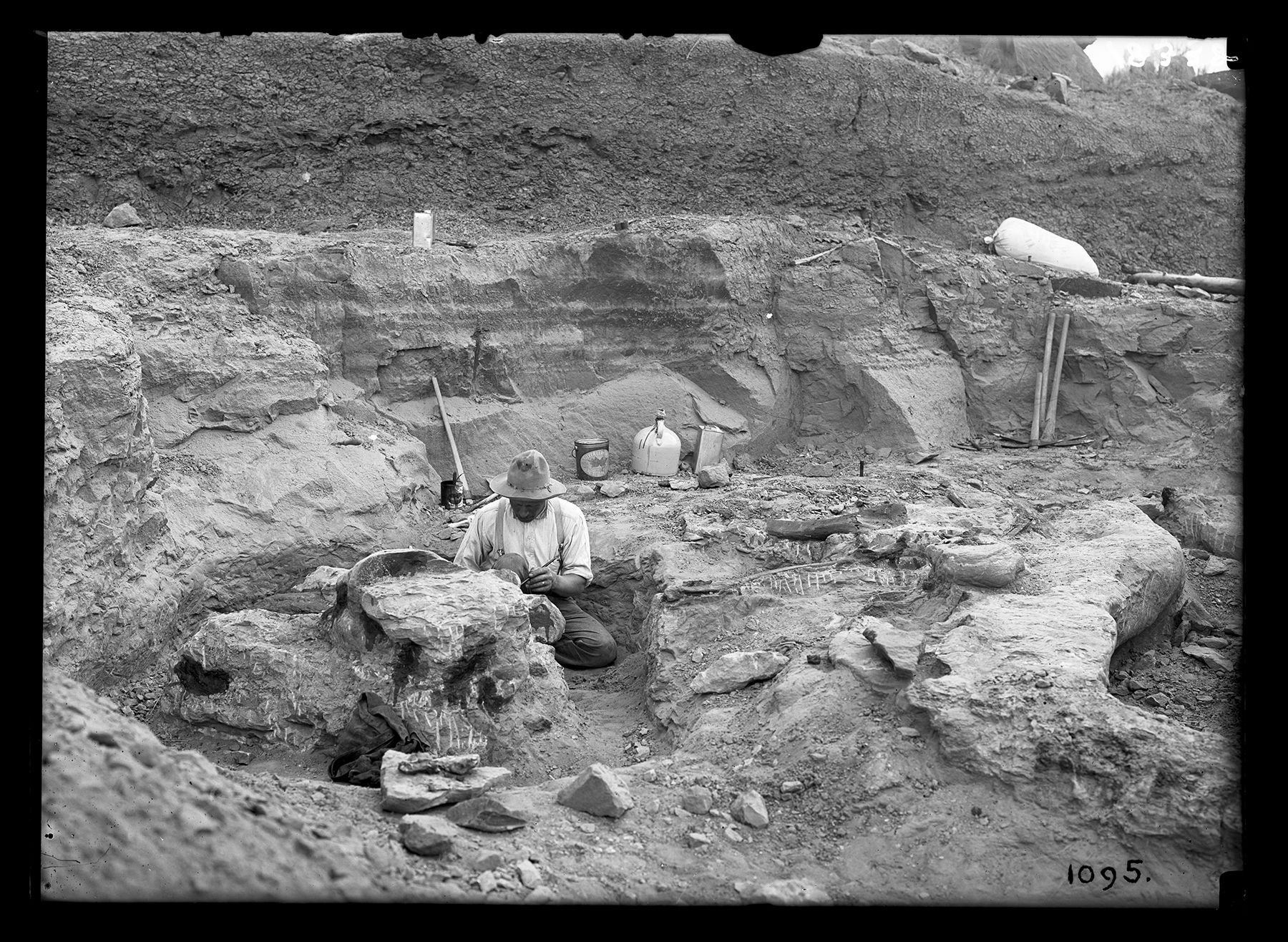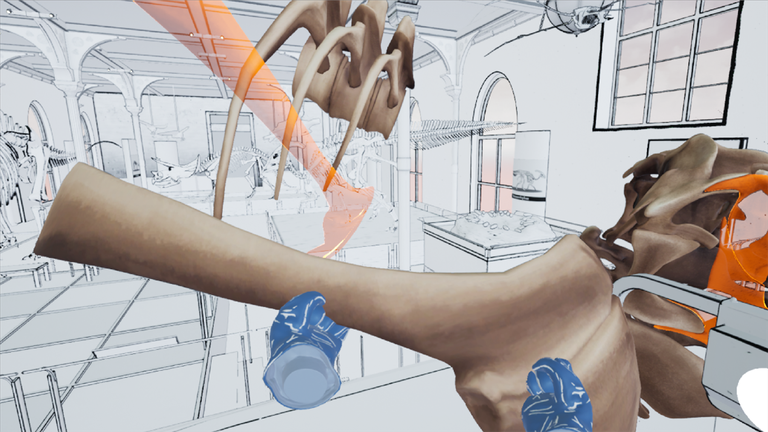Did you know that Tyrannosaurus Rex had feathers? It did: a sort of Mohican that ran from the top of its head to the tip of its tail. And its jaws were so powerful that the bones of its prey – which could have been anything – would simply explode under the pressure. And after decades of speculation, its little comedic arms are now generally considered to have been almost completely useless - a doomed vestigial carry-over from an evolutionary ancestor.
The great Spielbergian beast is the focus of a new exhibition at the American Museum of Natural History in New York. T. Rex: The Ultimate Predator maps out the etymology of the entire Tyrannosaur family (which is much wider than you think) and deep-dives into the biology, habits and characteristics of Rex, the ultimate carnivorous predator. The museum has a special link with T. Rex in particular, because Barnham Brown (pictured above), the fossil hunter who found the first skeleton in Montana in 1902, was on staff.
The exhibition represents the wealth of talent, insight and knowledge at the disposal of the museum, accrued over 150 years of academia. But such a storied history doesn’t mean a fusty future. Quite the opposite, in fact. The curators at the AMNH are always looking for new ways to tell stories, and the use of VR in T. Rex: The Ultimate Predator runs parallel with a wave of beguiling tech that is augmenting exhibitions across the globe. In New York, visitors are invited to don headsets, pick up controllers and work as a trio to build the skeleton of a T. Rex. Once completed, the dinosaur comes to life and the virtual walls of the museum drop away, leaving you alone in the digital wild with the most formidable meat eater of all time.
The tech is managed by HTC, a Taiwanese company angling to be the market leader in consumer VR, as well as the go-to partner for galleries, artists and museums looking to enrich the experience for visitors. In the past, the company has worked with the Nobel Museum, the Tate Modern and the Royal Academy, among others. It has allowed people to walk around Modigliani’s studio, experience life in East Berlin during the Cold War and get face to face to with the micro plastics that now fill our seas. Right now, Musée de l’Orangerie in Paris is offering visitors the chance to step inside Claude Monet’s water lily adorned garden and explore the intricacies of his obsession with the flower. And at the end of the month, visitors to Art Basel in Hong Kong will be able to experience an original virtual reality artwork by iconic multimedia artist Laurie Anderson. To the Moon is a 15-minute long voyage through space and time and the stars and cosmic philosophy, something that Anderson simply wouldn’t have been able to create in more traditional medium. And that’s the allure of VR in culture: it’s a whole new way of telling stories.
“This is kind of an experiment for us,” explains Mark Norell, curator of T. Rex: The Ultimate Predator, “this is the first time we’ve used VR in an exhibition. With VR, you have to find a way to make it educational and tell a story and not just have a ‘VR experience’, and that’s really challenging. I know that in art museums, VR is going to be more and more of an important component. Being able to take someone inside an old master painting, like a Bruegel painting, [would be amazing] because there’s so much going on it would be great to investigate.”
Can Norell see a time when VR might replace physical exhibitions altogether? Well, no. He firmly believes in the currency of objects, and that people will always want to see the real thing. “Now, you could make an exact copy down to the brush stroke of the Mona Lisa and hang it up, and you couldn’t tell it from the real one,” he says. “But if you take the Mona Lisa out on loan and put it in the MET, there would be a line all the way down Fifth Avenue. People like real.” But there’s no doubt it’s here to stay, and who knows what might be possible in the future? Right now, it’s just cool to be walking with dinosaurs.














